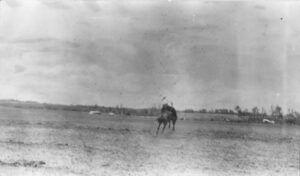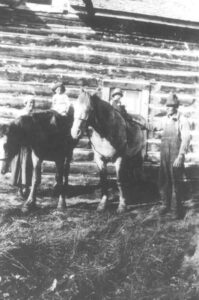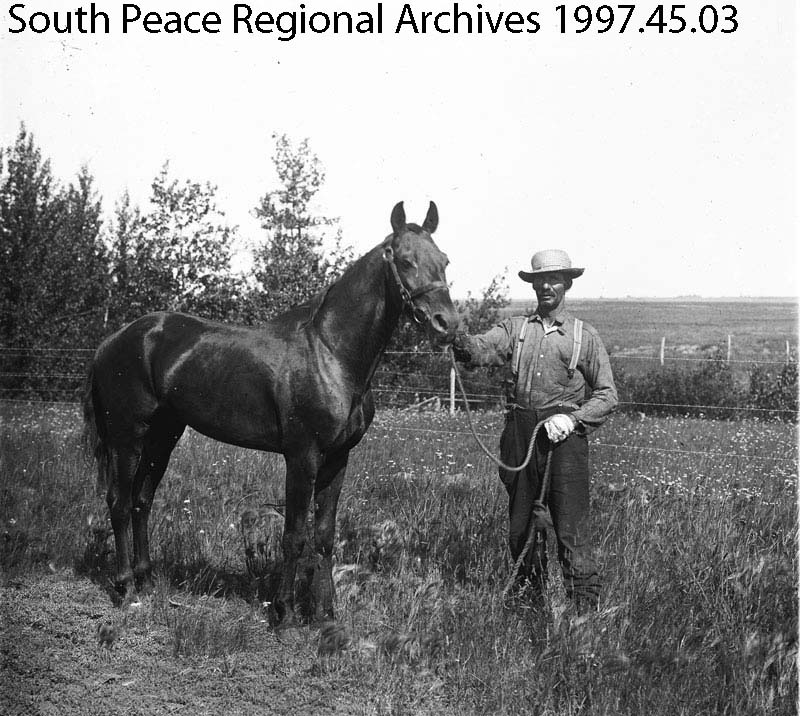Image: Snapshot of a casually dressed man holding the halter of a horse, with fences, trees and open pasture in background. ca. 1915 (SPRA 1997.45.03, Fonds 052)
There is nothing like an image of wild horses roaming the wide open prairie to conjure up memories of the “Old West.” Several intriguing clues in the Archives’ collections suggest that wild horses played a part in our “Old West” period and beyond.
The earliest mention of horses within the records in our collection comes from the published Dunvegan Post Journals for 1822 to 1830 and —for 1834 to 1845. In the earliest journal entries, horses are an important, if sometimes unruly part of the work force. Entries in the 1834 to 1845 journals contain numerous references to wrangling the horses: “Same work going on except Dubreuil who went in search of the horses…” On Wednesday, 27 September 1828, Archibald McDonald wrote while travelling from Fort Vermillion to Fort Dunvegan: “Towards evening the appearance of a half-a-dozen horses convinced us we were near Dunvegan…”
By the time O. H. Johnson arrived here some sixty years later, wild horses were a feature in the landscape: “September 9 George Stone was here for dinner hunting horses south of creek…
December 2 Glandey[?] came up hunting horses.”
A very blurry 1911 photograph of a cowboy riding a bucking bronco on the open prairie suggests that wild horses may have become a regular source of income for Indigenous people. The original caption claims “Often it was first nations young men who caught and broke wild horses for re-sale to settlers” (SPRA 0155.05.11).

In 1918, 19 year old Stanley William Bird wrote in a letter to his family that, besides bear and moose and foxes and a timber wolf, “there’s wild horses here too.”
Frank Stoll, born to local pioneers, George and Theresa Stoll, remembered the family’s first team of horses: Jess and Dolly. They were “Cayuses or Indian ponies.” The picture in this article, from the Frank Stoll fonds, may be these horses.
Don Nelson, interviewed for the Kakwa/Two Lakes Oral History Project (fonds 133) relates stories about hunting wild horses with the Wanyandie boys, two local Indigenous men, well into the forties.
The stories of local rodeos and stampedes illustrate that a local supply of horses would have been very important to the region, for work and for fun. It seems likely that wild horses played a part in helping to shape our northern communities.
This article was originally featured in the September 2019 issue of Telling Our Stories.

